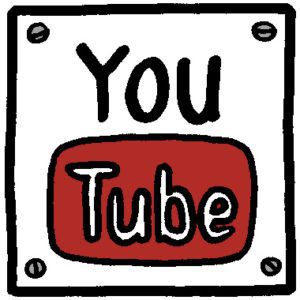People All Over the World Watch 1 Billion Hours Worth of YouTube Content a Day
Coming from its humble beginnings in 2005, YouTube has eventually become the most popular video content sharing platform on the Internet through the year. What started as a simple social media site has turned into one of the most popular ways to advertise and display messages to the public, personalizing advertisements and creating new ways to interact with audiences. And to keep up with the changing of times with regard to the ways one can use YouTube, it has undergone a number of iterations that helped it become the corporate juggernaut it is known for today.
One of the most monumental shifts in contemporary entertainment, more specifically in videos, is that they have been more and more accessible to people. They are readily available to be watched online when one finally has the time to catch up with their favorite shows. Unlike before when people had to make time to watch certain shows on TV as they come in designated time slots. Over the past year, TV has slowly but surely spilled into the YouTube stratosphere. Channels like Comedy Central paved the way in this phenomenon. They realized that with the relentless copyright-infringing clips continually uploaded, they rather provide their fans with the quality videos that they very much want to watch on demand. But instead of posting one whole show, which could be detrimental to their actual television performance, they opted to post five-to-ten-minute highlight reels of their best-performing shows. After this move become such a hit, they were quickly joined by a slew of US chat shows, including Jimmy Kimmel Live, The Late Show, Conan and Late Night with Seth Meyers.
Just last month, YouTube has achieved a brand new milestone in its young history. YouTube’s VP of engineering, Cristos Goodrow happily announced on the Official YouTube Blog that people across the world are spending a billion hours on the site watching videos every single day.

“While everyone seemed focused on how many views a video got, we thought the amount of time someone spent watching a video was a better way to understand whether a viewer really enjoyed it. It wasn’t an easy call, but we thought it would help us make YouTube a more engaging place for creators and fans. And last year, we hit a big milestone on that journey: people around the world are now watching a billion hours of YouTube’s incredible content every single day,” he wrote. “That’s the great thing about this milestone. It represents the enjoyment of the fantastically diverse videos that creative people make every single day. Around the world, people are spending a billion hours every day rewarding their curiosity, discovering great music, keeping up with the news, connecting with their favorite personalities, or catching up with the latest trend.
There’s a lot to find frustrating about YouTube – the constantly changing CMS, the clickbait videos, the Rick-Rolling – but being forced to view 30-second pre-roll ads probably hit the top of the list, but users are willing to forego these things and adapt to the changes to get their daily fix of material from the site. In fact, despite major changes rolling out, in 2012, the number of people visiting the video-sharing platform has grown exponentially.
Obviously, it does help that people who flock to YouTube to find videos to watch will technically run out of content to binge on. Aside from the short clips provided by TV shows as a form of teasers, there are also a lot of homegrown talents that create new YouTube channels and curate original content for people to see. Vloggers have been big in the social media world and a lot of them start by making daily videos chronicling their lives or their adventures.

Aside from YouTube, other sites are also benefiting in people’s interest in the online content. Facebook, which is arguably the largest and most prominent social networking site right now, poses some staggering number in terms of a number of hours members sift through their newsfeeds.
In an article published by the New York Times, the average time that people spend on Facebook is nearing an hour – which is more than any other leisure activity surveyed by the Bureau of Labor Statistics. This is with the exception of watching television programs and movies (an average per day of 2.8 hours). It’s more time than people spend reading (19 minutes); participating in sports or exercise (17 minutes), or social events (four minutes). It’s almost as much time as people spend eating and drinking (1.07 hours).
Ken Sena, a managing director and analyst at Evercore who covers consumer Internet companies breaks down these numbers for Facebook and come to the notion that the more time people spend on the site are directly proportional to its growth
“When you really think about it, 50 minutes is a tremendous amount of time – It’s huge. Usually, when a platform expands its user base, the average time spent goes down, because a lot of new people aren’t that active,” he said. “They’re doing a tremendous job of finding ways to keep people on the site.”
In hindsight, Facebook has branched out to a lot of other activities to the point that it is almost a hub for people looking for content and entertainment – a far cry from its original intention, which was to be a tool to connect with other people. Major businesses, media outlets, and even YouTube integrate themselves with Facebook because they know of its vast user base that crosses demographics. From young kids to old retirees, almost everyone in every corner of the earth right now has a Facebook profile.
The fast-paced digital has resulted in people getting more and more caught up with their smart devices connected to the World Wide Web. As long as this phenomenon continues, the online world will continue to bring out new trends in content production and even fresh ideas for media platforms.









